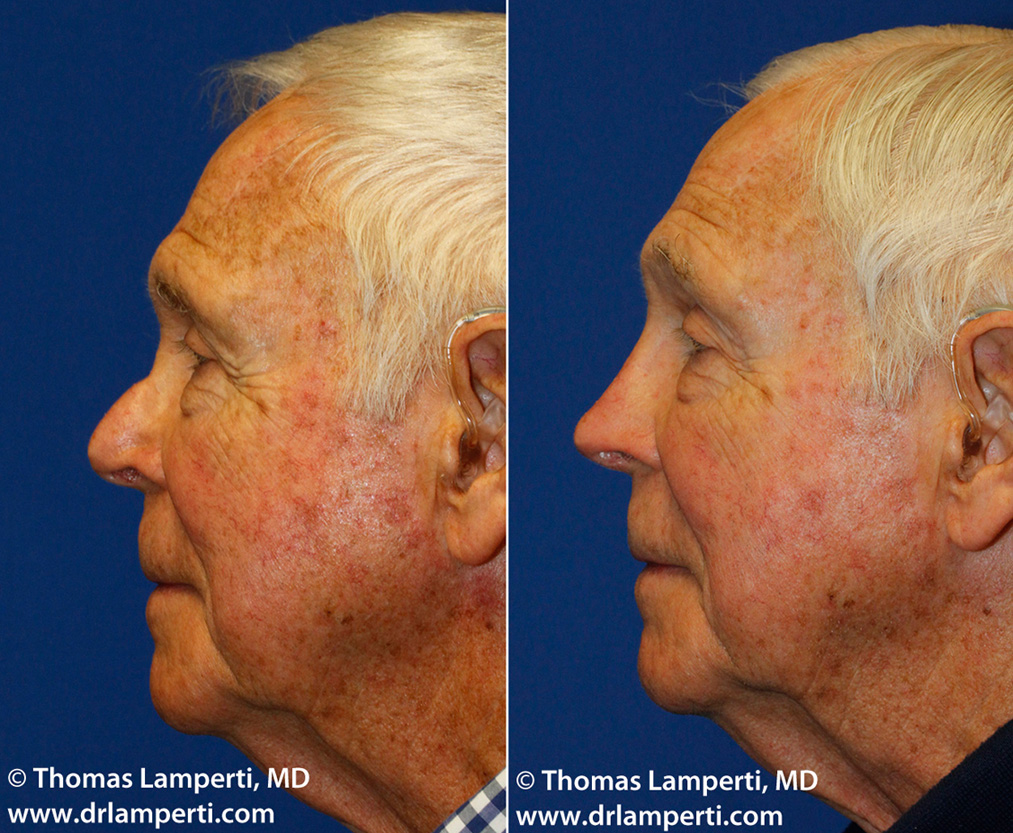Pollybeak deformity
What is a pollybeak deformity?
A pollybeak deformity occurs when the area above the tip of the nose on the bridge (also called the supratip) is the highest part of the nose when seen from a profile view. The pollybeak term comes from how the nose looks like a parrot beak.
Causes of a pollybeak deformity
A pollybeak deformity can occur from a variety of causes. Let's go through some common etiologies of the condition.
Overgrown Or Excess Residual Septal Cartilage
A very common cause of pollybeak deformity occurs when someone has a nasal hump taken down, but the surgeon doesn't fully address the whole length of the nose. This leaves excess height of the septum which leads to increased fullness in the supratip area. This problem can be rectified by trimming the excess cartilage to create the proper profile line.
This patient had a prior rhinoplasty to remove a nasal hump but was left with a residual pollybeak that was able to be treated during her revision rhinoplasty.
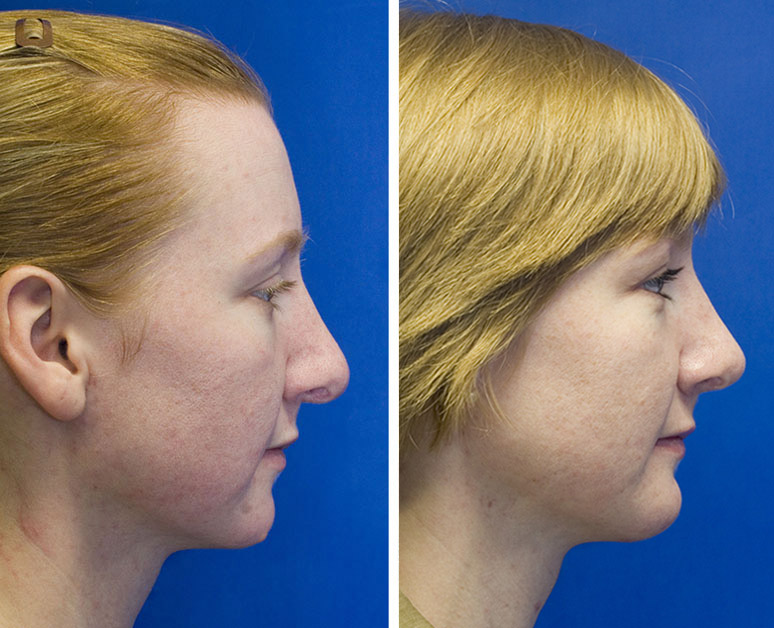
This next patient's pollybeak deformity was not due to prior surgery, but rather was related to excessive growth of her septum toward her bridge. This supra tip fullness was treated by trimming the excess septal cartilage which created a more refined bridge. Additionally, increasing the patient's tip projection also provided an improved transition from the tip to supratip.
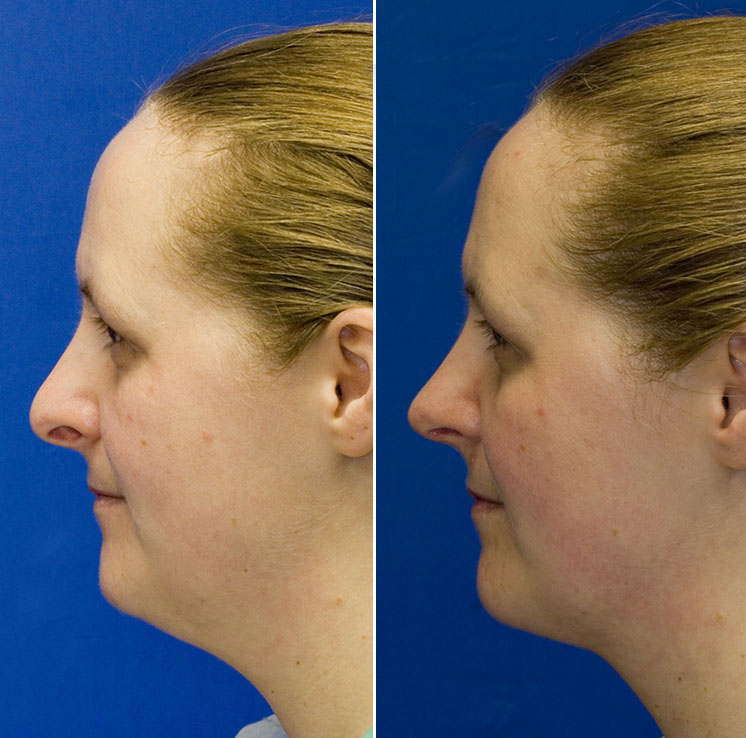
Prominent Nasal Tip Cartilages
Other patients have increased fullness to their supratip because of the prominence of their tip cartilages. This problem can be addressed with revision surgery as shown in the case below.
The patient below had such this problem that I treated during his revision rhinoplasty procedure. By performing a cephalic trim to his lower lateral cartialges, the patient's fullness is much improved.
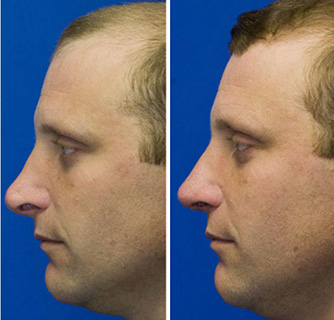
Subcutaneous Scar And Tip Drooping
A pollybeak deformity can also result from prior surgery if the overlying skin does not adequately reappose the underlying tip cartilages. This allows scar tissue to develop in the area. When recognized in the early postoperative period this scar can be treated with an injection of steroid to help soften the scar. If the scar matures, however, revision surgery is required to remove the scar tissue.
Another etiology is that the nasal tip can become droopy during the healing process if it doesn't have enough remaining support. As the tip lowers the supratip then becomes the highest point of the profile line.
Relative Excess From Over-resection Of The Bridge
A pollybeak can be caused not by excess supratip tissue but by over-resection of the bridge above the supratip. Treatment focuses on rebuilding the dorsum to rebalance the profile line. This patient had a prior rhinoplasty in which the upper portion of his bridge was over resected. This has led to excess fullness in his supratip area.
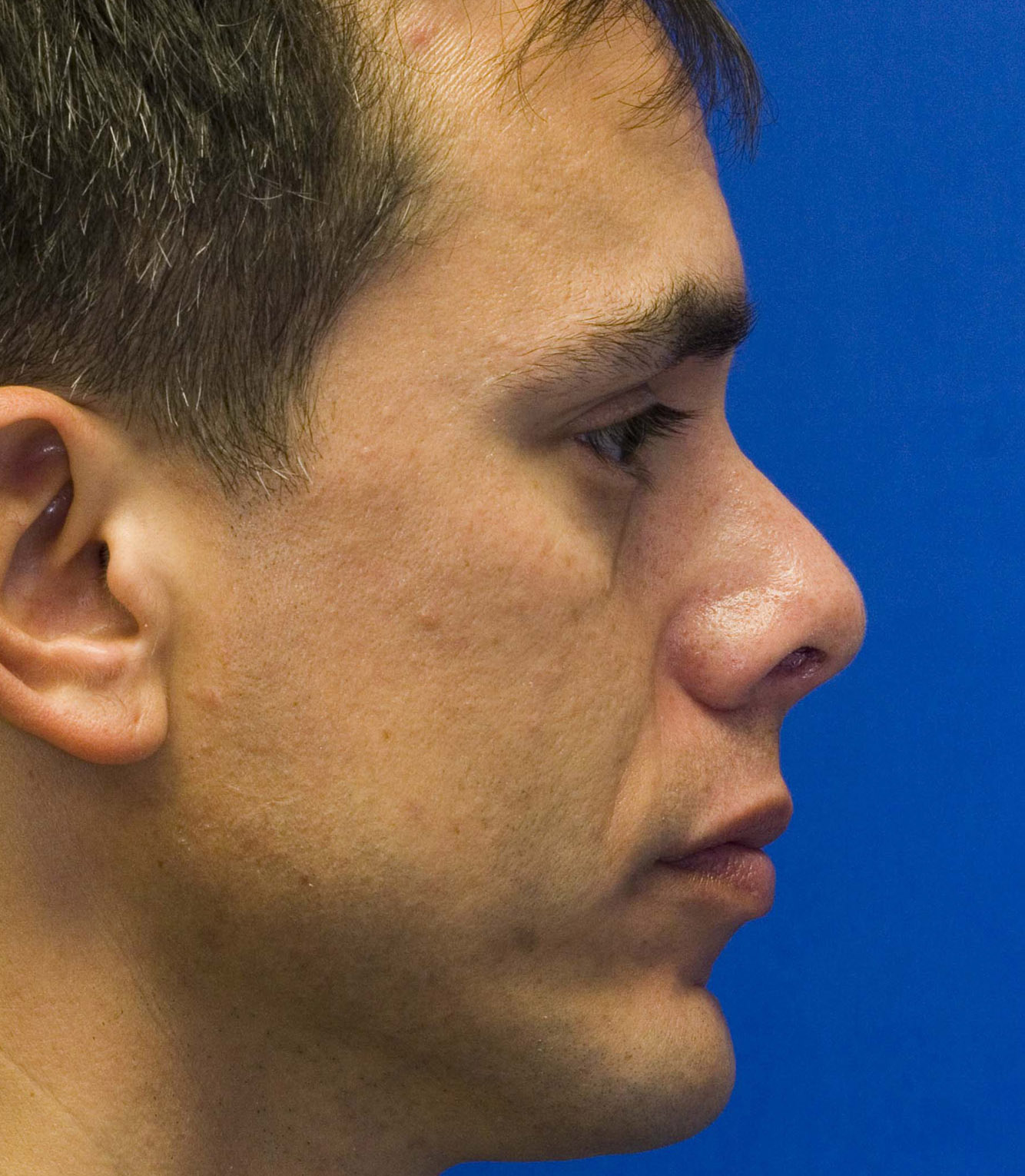
In the photo below you can see how Dr. Lamperti was able to improve his profile line by cartilage grafting the over-resected bridge and shaving down excess scar and cartilage further down toward the tip.
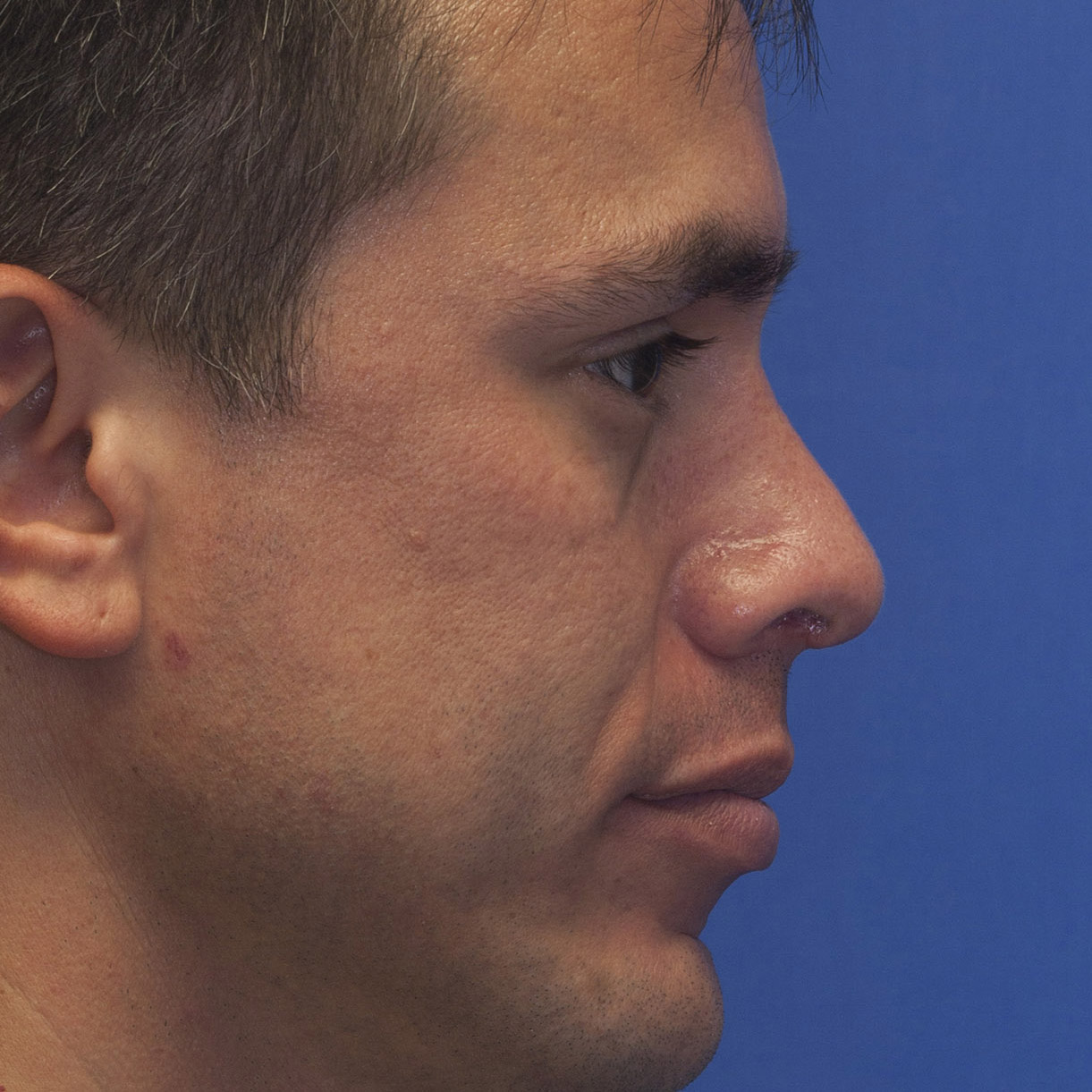
More Pollybeak Deformity Before And After Photos

Meet Plastic Surgeon, Dr. Lamperti
Dr. Lamperti, a Seattle rhinoplasty super-specialist, has devoted his career to treatments of the head, face and neck. He feels that by focusing his plastic surgery endeavors solely to the face he is best able to provide the excellent results his patients desire.
Interested in learning more about having a Rhinoplasty Treatment in Seattle with Dr. Lamperti?
Contact us to have a private consultation or view Before & After photos here.
